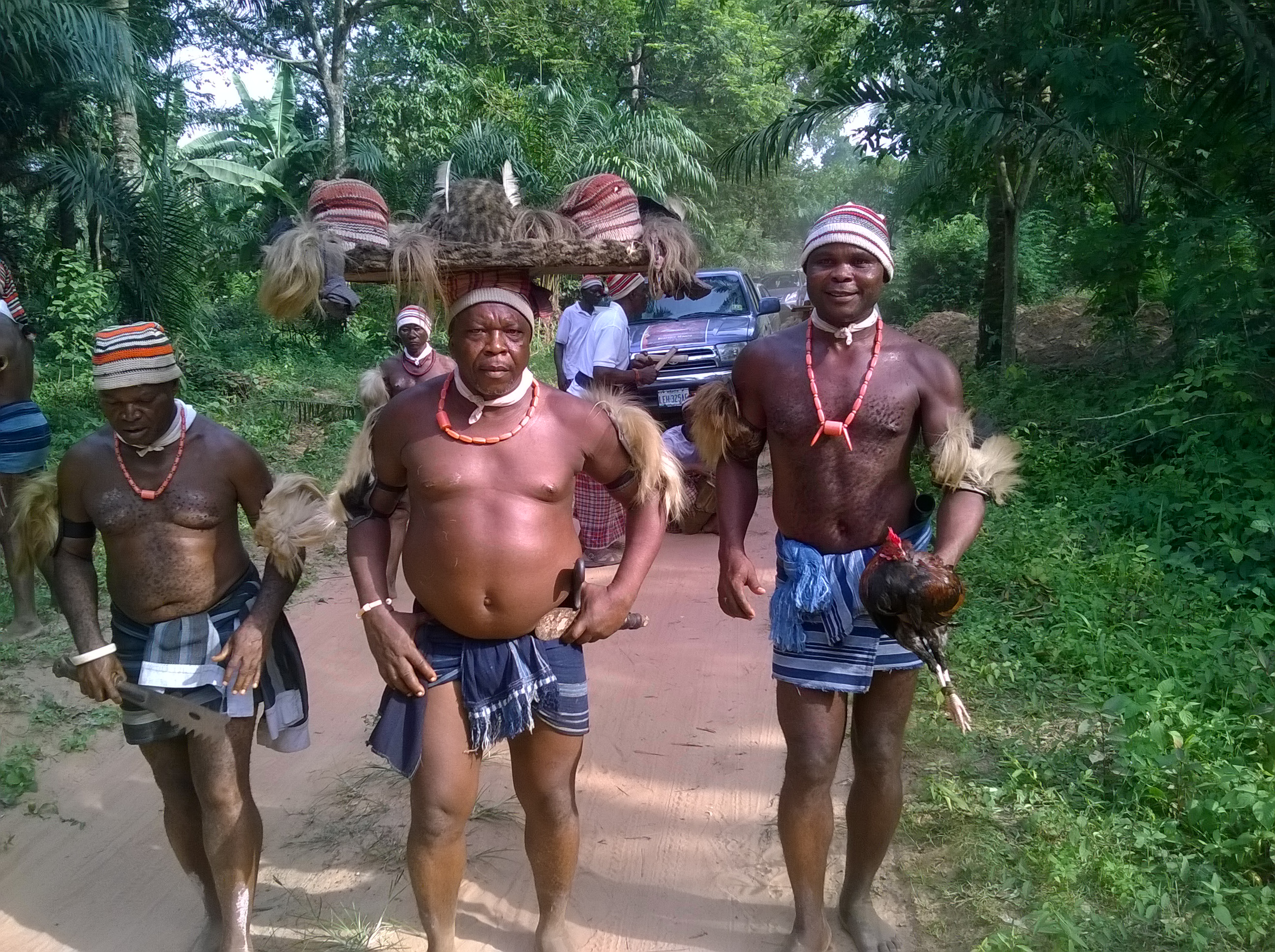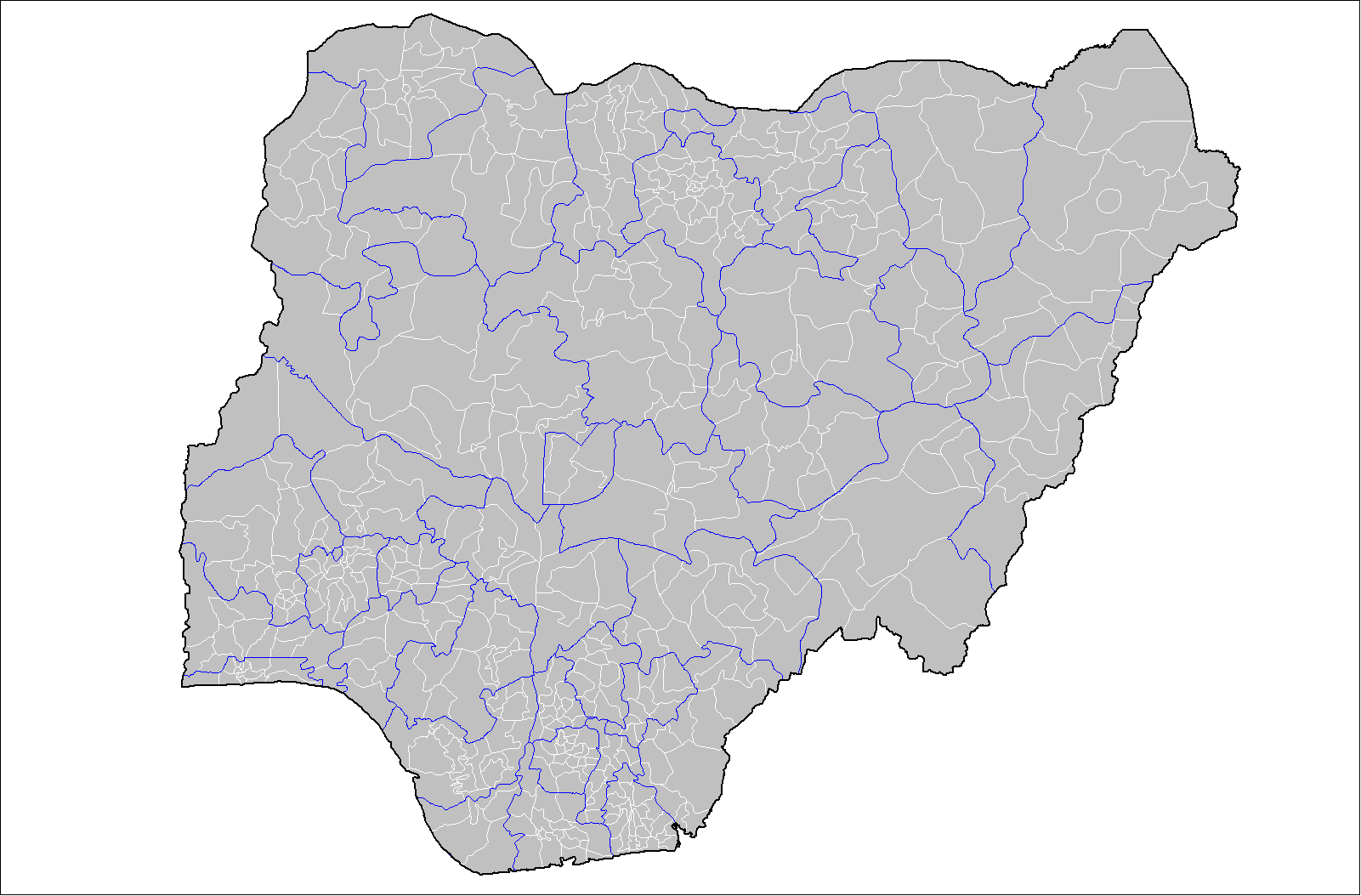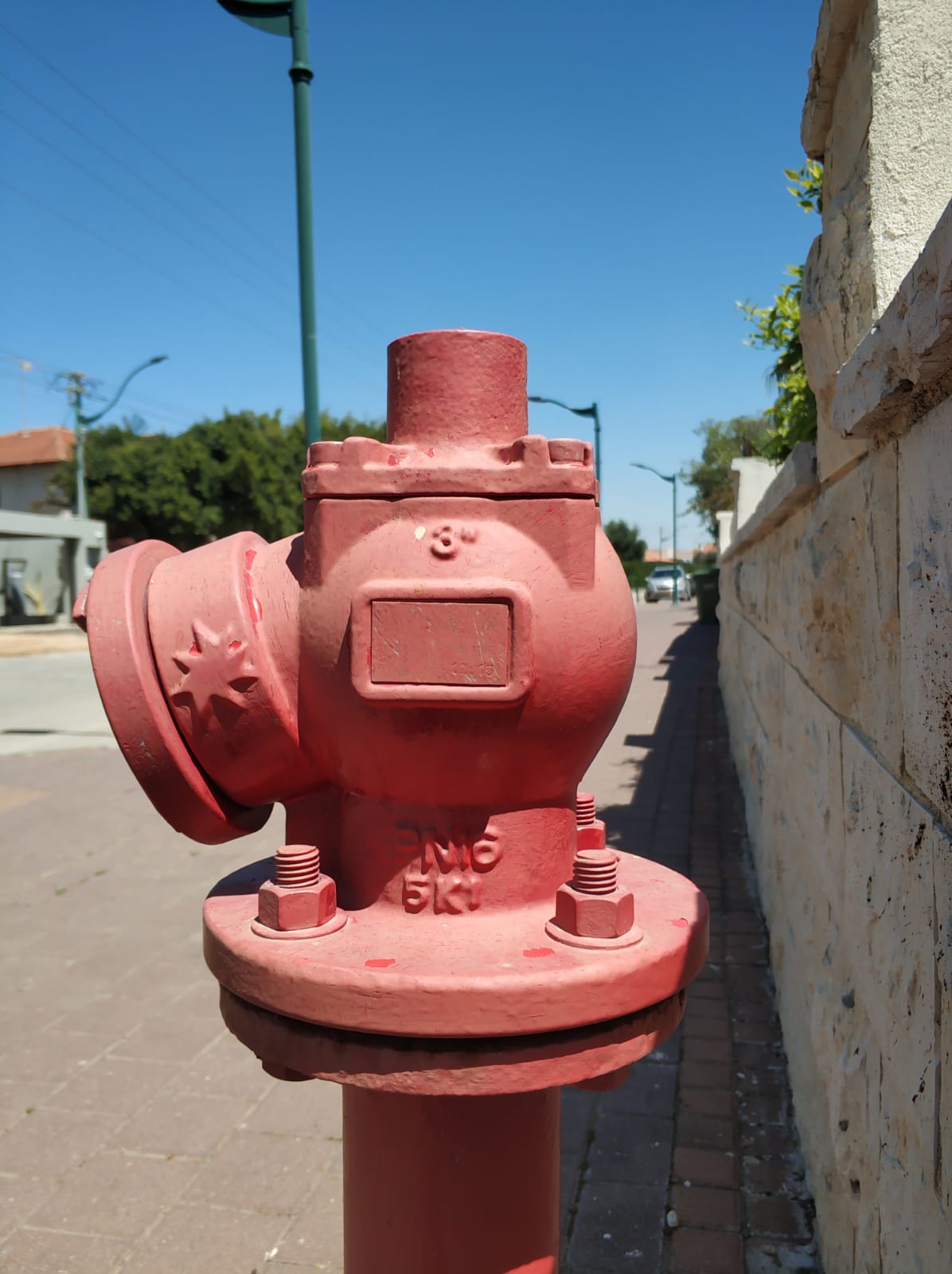|
Ohafia
Ohafia refers to the town and local government area (LGA) of same name located in present-day Abia State, Nigeria. It is an Igbo-speaking town. The ancestral capital of Ohafia town is the centrally located village of Elu. The Ohafia Local Government Area is an administrative jurisdiction assigned by the Nigeria Government, which covers the entire villages of Ohafia town and other neighbouring towns such as Abiriba, Nkporo, Amavo, and Aro-Ngwa with its Administrative Headquarters at Ebem Ohafia. The ancestors of the Ohafia people were renowned as mighty warriors. This aspect of the Ohafia peoples' history remains fundamental to the Ohafia people's sense of identity. The knitted warrior's cap or "leopard cap" () is well known and is an associated product of Ohafia. The Ohafia warrior tradition is embodied in the performance of '' iri agha''. Ohafia is home to the third largest military base in Nigeria, named Goodluck Jonathan Barracks after Nigeria's former President - Goodluc ... [...More Info...] [...Related Items...] OR: [Wikipedia] [Google] [Baidu] |
Ohafia War Dance
The Ohafia War Dance (Igbo: ''ikpirikpi ogu'') is a popular war dance performed in several parts of Eastern Nigeria. The dance which has its roots from Ohafia is performed by a group of muscular men in commemoration of their strength in fighting and winning wars in the past. Origin According to oral history, the ancestors of Ohafia were renowned to be mighty men of war who were always on the lookout for wars to take part in. The Ohafia warrior tradition which remains one of the fundamental identity of the people of Ohafia is hinged in the performance of ''ikpirikpi ogu'' - the practice of beheading a fallen enemy. A human skull is a proof of a man's courage and strength. Only those who brought home a human head could join the Ogbu-Isi society and wear an eagle's plume which is a symbol of courage. Performance The Ohafia War Dance which is also performed to celebrate an individual's achievement is headed by a lead dancer carrying a basket full of human skulls (Igbo Igbo may ref ... [...More Info...] [...Related Items...] OR: [Wikipedia] [Google] [Baidu] |
Abia State
Abia is a state in the Southeastern region of Nigeria. The state's capital is Umuahia and its most populous city is Aba. Abia is bordered the west by Imo, east by Cross River, south by Rivers, northwest by Anambra and northeast by Enugu and Ebonyi. The state is divided between the Niger Delta swamp forests in the south and the Cross–Niger transition forests. The Imo and Aba Rivers flows along the state's western and southern borders respectively. The land for agriculture as well as the production of crude oil and natural gas ranks Abia as the joint-eighth highest Human Development Index in Nigeria since 2019. Abia's history begins as part of the Aro Confederacy until their defeat in the early 1900s by the British troops during the Anglo-Aro War. After the war, the area was incorporated into the Southern Nigeria Protectorate. After Nigeria's independence in 1960, Abia became part of the post-independence Eastern Region until 1967 before the region was split, ... [...More Info...] [...Related Items...] OR: [Wikipedia] [Google] [Baidu] |
Nkporo
Nkporo (Okwe ancient kingdom) is a town in Abia State, in southeastern Nigeria, traditionally an Igbo speaking region. It is in the Ohafia Local Government Area. History Nkporo is said to be one of the oldest communities among clans that are referred to by Anthropologists and Sociologists as the Cross River Igbos. The movement of the main body of Nkporo people and the eventual opening and settling in their present-day location took almost three hundred years. Their ancestors where the original occupants of an ancient Igbo Kingdom called Ama-mpoto which existed within the Nkanal Ikot or Okoro Nkon Ikpe zone of the present Ibibio or Efik land in present-day Akwa Ibom state. The first settlement of the Nkporo people was called Ama Mpoto which means "mpoto square". The leader of the people was named Okwo Nkwoghoro who was popularly called "Okwe" in abbreviation. It was believed that before moving to Okpukpu-Iyi Aro, Okwo Nkwoghoro begat Iwowo also known as "Iwo" who in turn bega ... [...More Info...] [...Related Items...] OR: [Wikipedia] [Google] [Baidu] |
Abiriba
Abiriba pronounced E`biriba`/is an ancient Enuda kingdom in Abia State, in southeastern Nigeria, traditionally an Igbo speaking region. It is in the Ohafia local government area. History The origin of the Abiriba people is not as speculative as the origin of other Igbos of southeastern Nigeria. Historical evidence supports the fact that Abiriba people migrated from the cross river basin and share historical ancestry with the people of Arochukwu. constant disputes between the seven families under Ukpaghiri prompted the clan to move to Ena and finally to Akpa. However, the Abiriba people found it difficult to settle in Akpa due to several issues with neighbours. Nevertheless, the death of Ukpaghiri led to the movement of Abiriba and his group to Usukpam. Despite staying there for many years, they were still never at peace with the neighbours. Abiriba is made up of three main villages: Ameke, Amogudu, and Agboji. It operates a monarchical system. It operates on a tripodal syst ... [...More Info...] [...Related Items...] OR: [Wikipedia] [Google] [Baidu] |
Igbo People
The Igbo people ( , ; also spelled Ibo" and historically also ''Iboe'', ''Ebo'', ''Eboe'', / / ''Eboans'', ''Heebo''; natively ) are an ethnic group found in Nigeria, Cameroon, Gabon, and Equatorial Guinea. Their primary origin is found in modern-day Abia State, Abia, Anambra State, Anambra, Ebonyi State, Ebonyi, Enugu State, Enugu, and Imo States, while others can be found in the Niger Delta and along the Cross River. The Igbo people are one of the largest List of ethnic groups of Africa, ethnic groups in Africa. The Igbo language is part of the Niger–Congo languages, Niger-Congo language family. Its regional dialects are mutually intelligible amidst the larger "Igboid languages, Igboid" cluster. The Igbo homeland straddles the lower Niger River, east and south of the Edoid languages, Edoid and Idomoid languages, Idomoid groups, and west of the Lower Cross River languages, Ibibioid (Cross River) cluster. Before the period of Colonial Nigeria, British colonial rul ... [...More Info...] [...Related Items...] OR: [Wikipedia] [Google] [Baidu] |
Local Government Areas Of Nigeria
Nigeria has 774 local government areas (LGAs), each administered by a local government council consisting of a chairman, who is the chief executive, and other elected members, who are referred to as councillors. Each LGA is further subdivided into a minimum of ten and a maximum of twenty wards. A ward is administered by a councillor, who reports directly to the LGA chairman. The councillors fall under the legislative arm of the local government, Local Government, the third tier of government in Nigeria, below the state governments and the federal government. Functions The functions of local governments are detailed in the Constitution of Nigeria, Nigerian constitution and include the following: * Economic recommendations to the State. * Collection of taxes and fees. * Establishment and maintenance of cemeteries, burial grounds and homes for the destitute or infirm. * Licensing of bicycles, trucks (other than mechanically propelled trucks), canoes, wheelbarrows and carts. * Esta ... [...More Info...] [...Related Items...] OR: [Wikipedia] [Google] [Baidu] |
Umuahia
Umuahia () is the capital city of Abia State in southeastern Nigeria. Umuahia is located along the rail road that lies between Port Harcourt to its south, and Enugu city to its north. Umuahia has a population of 359,230 according to the 2006 Nigerian census. Umuahia is renowned for being a railway and agricultural market center, which attracts traders and farmers from neighboring towns to sell their produce, such as yams, cassava, corn (maize), taro, citrus fruits, and palm oil and kernels. There are industries that help drive its economy, such as a brewery and a palm-oil-processing plant. Nigeria's National Root Crops Research Institute, at Umudike, is adjacent to the town. So also is the Michael Okpara University of Agriculture, Umudike (MOUAU). Umuahia also has several colleges including Trinity College (theological), Government College Umuahia, Holy Rosary Girls Secondary School and hospitals like the Federal Medical Centre, Umuahia (formerly Queen Elizabeth Hospital). ... [...More Info...] [...Related Items...] OR: [Wikipedia] [Google] [Baidu] |
Local Government Areas Of Nigeria
Nigeria has 774 local government areas (LGAs), each administered by a local government council consisting of a chairman, who is the chief executive, and other elected members, who are referred to as councillors. Each LGA is further subdivided into a minimum of ten and a maximum of twenty wards. A ward is administered by a councillor, who reports directly to the LGA chairman. The councillors fall under the legislative arm of the local government, Local Government, the third tier of government in Nigeria, below the state governments and the federal government. Functions The functions of local governments are detailed in the Constitution of Nigeria, Nigerian constitution and include the following: * Economic recommendations to the State. * Collection of taxes and fees. * Establishment and maintenance of cemeteries, burial grounds and homes for the destitute or infirm. * Licensing of bicycles, trucks (other than mechanically propelled trucks), canoes, wheelbarrows and carts. * Esta ... [...More Info...] [...Related Items...] OR: [Wikipedia] [Google] [Baidu] |
Millimetre
330px, Different lengths as in respect of the electromagnetic spectrum, measured by the metre and its derived scales. The microwave is between 1 metre to 1 millimetre. The millimetre (American and British English spelling differences#-re, -er, international spelling; International System of Units, SI unit symbol mm) or millimeter (American and British English spelling differences#-re, -er, American spelling) is a Units of measurement, unit of length in the International System of Units (SI), equal to one thousandth of a metre, which is the SI base unit of length. Therefore, there are one thousand millimetres in a metre, and there are ten millimetres in a centimetre. One millimetre is equal to micrometres or nanometres. Since an inch is officially defined as exactly 25.4 millimetres, a millimetre is equal to exactly (≈ 0.03937) of an inch. Definition Since 1983, the metre has been defined as "the length of the path travelled by light in vacuum during a time interval of ... [...More Info...] [...Related Items...] OR: [Wikipedia] [Google] [Baidu] |
Monsoon
A monsoon () is traditionally a seasonal reversing wind accompanied by corresponding changes in precipitation but is now used to describe seasonal changes in Atmosphere of Earth, atmospheric circulation and precipitation associated with annual latitudinal oscillation of the Intertropical Convergence Zone (ITCZ) between its limits to the north and south of the equator. Usually, the term monsoon is used to refer to the Wet season, rainy phase of a seasonally changing pattern, although technically there is also a dry phase. The term is also sometimes used to describe locally heavy but short-term rains. The major monsoon systems of the world consist of the Monsoon#Africa (West African and Southeast African), West African, Asian–Australian monsoon, Australian, the North American monsoon, North American, and South American monsoons. The term was first Glossary of the British Raj, used in English in British India and neighboring countries to refer to the big seasonal winds blowin ... [...More Info...] [...Related Items...] OR: [Wikipedia] [Google] [Baidu] |
Degrees Celsius
The degree Celsius is the unit of temperature on the Celsius temperature scale "Celsius temperature scale, also called centigrade temperature scale, scale based on 0 ° for the melting point of water and 100 ° for the boiling point of water at 1 atm pressure." (originally known as the centigrade scale outside Sweden), one of two temperature scales used in the International System of Units (SI), the other being the closely related Kelvin scale. The degree Celsius (symbol: °C) can refer to a specific point on the Celsius temperature scale or to a difference or range between two temperatures. It is named after the Swedish astronomer Anders Celsius (1701–1744), who proposed the first version of it in 1742. The unit was called ''centigrade'' in several languages (from the Latin ''centum'', which means 100, and ''gradus'', which means steps) for many years. In 1948, the International Committee for Weights and Measures renamed it to honor Celsius and also to remove ... [...More Info...] [...Related Items...] OR: [Wikipedia] [Google] [Baidu] |
Inch
The inch (symbol: in or prime (symbol), ) is a Units of measurement, unit of length in the imperial units, British Imperial and the United States customary units, United States customary System of measurement, systems of measurement. It is equal to yard or of a foot (unit), foot. Derived from the Uncia (unit), Roman uncia ("twelfth"), the word ''inch'' is also sometimes used to translate similar units in other measurement systems, anthropic units, usually understood as deriving from the width of the human thumb. Standards for the exact length of an inch have varied in the past, but since the adoption of the international yard during the 1950s and 1960s the inch has been based on the metric system and defined as exactly 25.4Millimetre, mm. Name The English word "inch" () was an early borrowing from Latin ' ("one-twelfth; Roman inch; Roman ounce"). The vowel change from Latin to Old English (which became Modern English ) is known as Germanic umlaut, umlaut. The consonant c ... [...More Info...] [...Related Items...] OR: [Wikipedia] [Google] [Baidu] |





